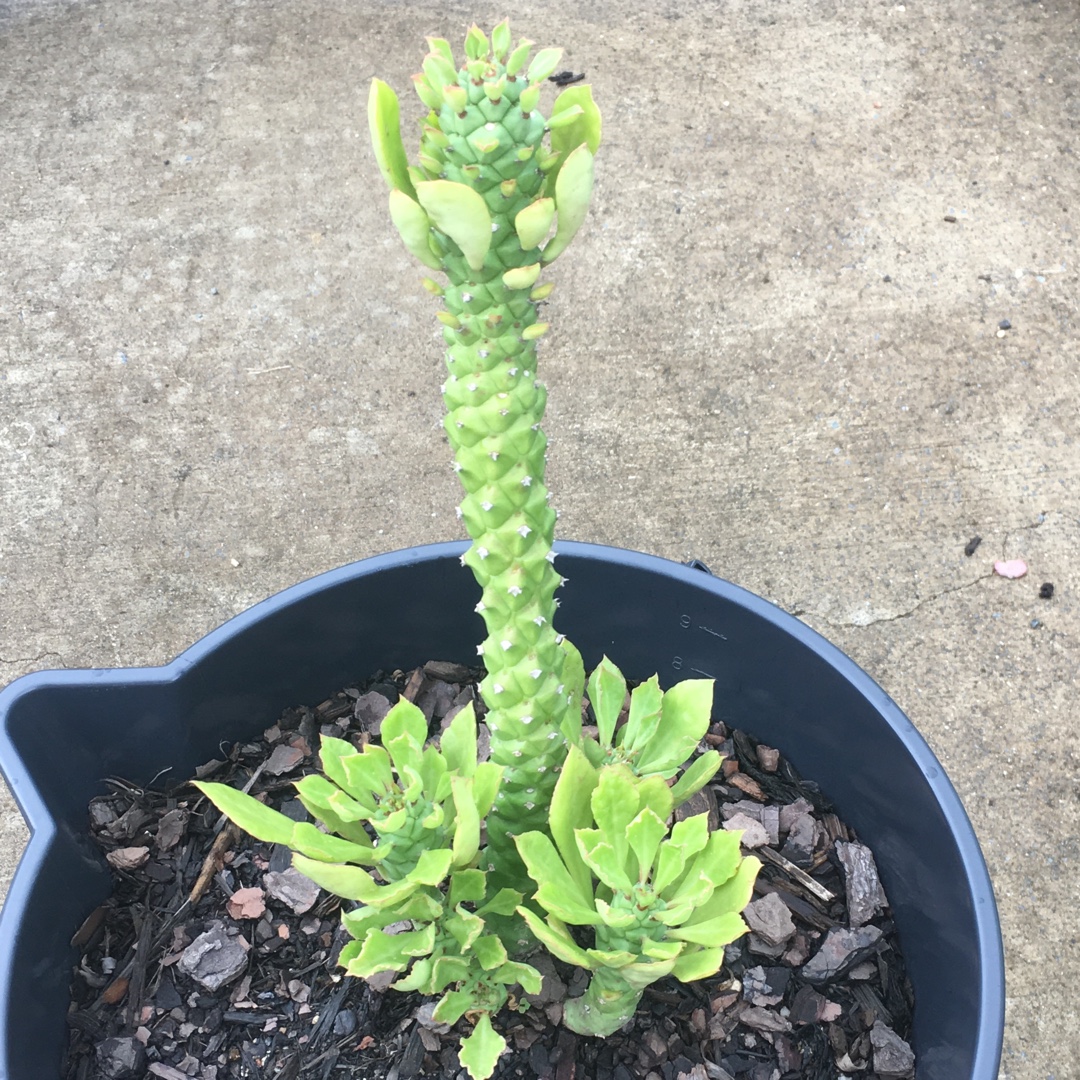
Euphorbia Guentheri
Sausage Spurge
Monadenium guentheri is a stout perennial succulent herb with long, cylindrical stems, with prominent spine-tipped tubercles and fleshy sickle-shaped deciduous leaves. Flowers small with a red rim-like gland and enclosed in two fused greenish-white bracts with lovely purple mottling. At yet very few species of this Genus are to be found in collections but this one is one of the older species described during the early part of the twentieth-century Euphorbia succulent varieties are easy to grow and are suited to any well drained soil in full sun. They grow well when there is a layer of brick and charcoal pieces, on top of which sandy loam soil is spread. They need little maintenance. Young plant are happy growing indoors.
Contributed by @loznoz1803
-
Full sun
-
Very little water
-
A little frost hardy: 32F (0°C)
-
Light and free draining
Common name
Sausage Spurge
Latin name
Euphorbia Guentheri
type
Succulent
family
Euphorbiaceae
ph
5.0 - 7.0 Acid - Neutral
Plant & bloom calendar
-
Best time to plant
full grown dimensions
 0.50 M
0.30 M
0.50 M
0.30 M
Euphorbia Guentheri
Monadenium guentheri is a stout perennial succulent herb with long, cylindrical stems, with prominent spine-tipped tubercles and fleshy sickle-shaped deciduous leaves. Flowers small with a red rim-like gland and enclosed in two fused greenish-white bracts with lovely purple mottling. At yet very few species of this Genus are to be found in collections but this one is one of the older species described during the early part of the twentieth-century Euphorbia succulent varieties are easy to grow and are suited to any well drained soil in full sun. They grow well when there is a layer of brick and charcoal pieces, on top of which sandy loam soil is spread. They need little maintenance. Young plant are happy growing indoors.
Propagation
From Early Spring TO Late Winter
The most common form of propagation for succulents is called vegetative propagation. This involves cuttings, where several inches of stem with leaves are cut, allowed some time to heal and after healing produce a callus. After a week or so, roots should grow. Another method is division which involves uprooting an overgrown clump and pulling the stems and roots apart. The easiest method is to allow the formation of a callus from a leaf or segment.
Planting
From Early Spring TO Early Spring
Succulents need good draining soil. When planting in the garden, make sure the area drains well and is not in a hollow that remains wet. Specially prepared cactus soil can be purchased for planting in pots or incorporate sand, gravel or volcanic rock for better drainage. The container you are planting in should have a drainage hole and it is wise to put crushed rock at the bottom before your planting medium.














